One of the best ways to maintain good health is by eating fewer carbs. This has been proven to reduce your hunger levels significantly, something that greatly helps you in losing weight and maintaining good shape. With this, you don’t even need to keep counting your calories.
23 reputable studies have shown that eating a low-carb diet can cause weightloss by upto 2-3 times more than a low-fat diet. When you decrease your intake of carbs the health benefits extend to a reduction in your body’s blood sugar and pressure, triglycerides and even improving the good cholesterol in your body.
Eating a low-carb diet does not have to be something so complicated. All you have to do is to simply base what you eat on real foods low in carbs so that your overall health improves and you lose more weight.
Below are these low-carb foods that are both healthy and nutritious. The best part is these foods are also very delicious.
Eggs and meats
1.Beef
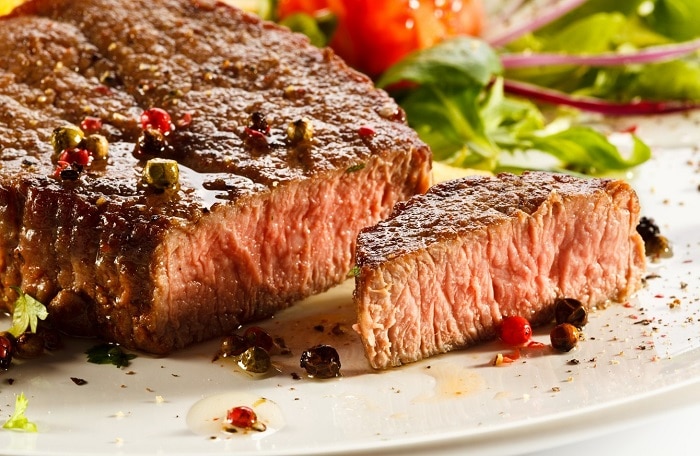
Beef, aside from being very satiating, is packed with lots of nutrients that are all important such as vitamin B12 and iron. There are so many types of beef that include ribeye steak, ground beef and hamburgers.
Amount of carbs in beef-zero
Eggs and the different types of meat around are not only delicious, but also contain close to zero carbohydrates. The only exception to this are organ meats for example, liver, which contains around 5% of carbs.
Amount of carbs in eggs and meats: zero
2. Lamb
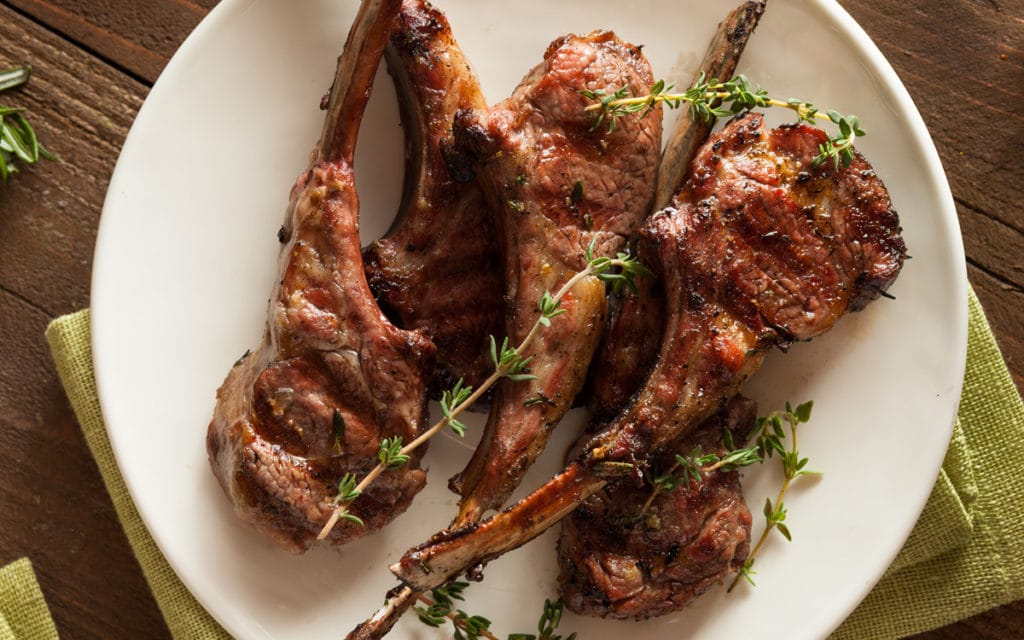
Just like beef, lamb contains a lot of nutrients that are helpful to your body. They include vitamin B12 and also iron. In most cases, lamb is grass-fed so it’s mostly high in conjugated linoleic acid (CLA) which is a fatty acid.
Amount of carbs in lamb: Zero
3. Chicken
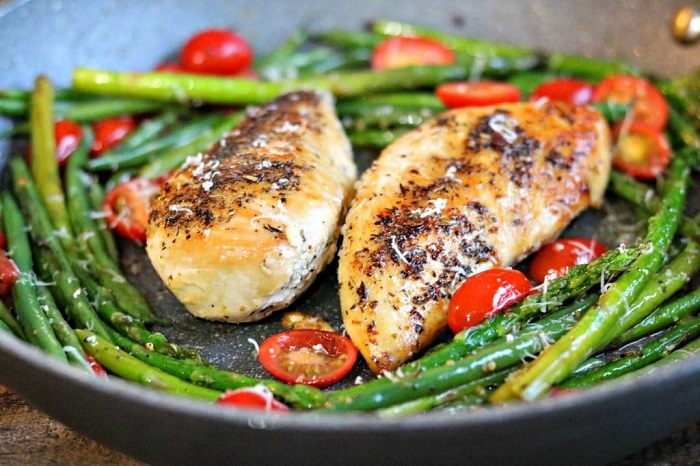
Chicken is a favorite dish for so many people around the world. Not only is it delicious but it also contains many nutrients that are of benefit to your body. Chicken is also a great source of protein. If you’re on a wightloss journey or on a low-carb diet generally, fattier cuts such as thighs and chicken wings make for a better option .
Amount of carbs in chicken: Zero
4. Pork ( Including bacon)
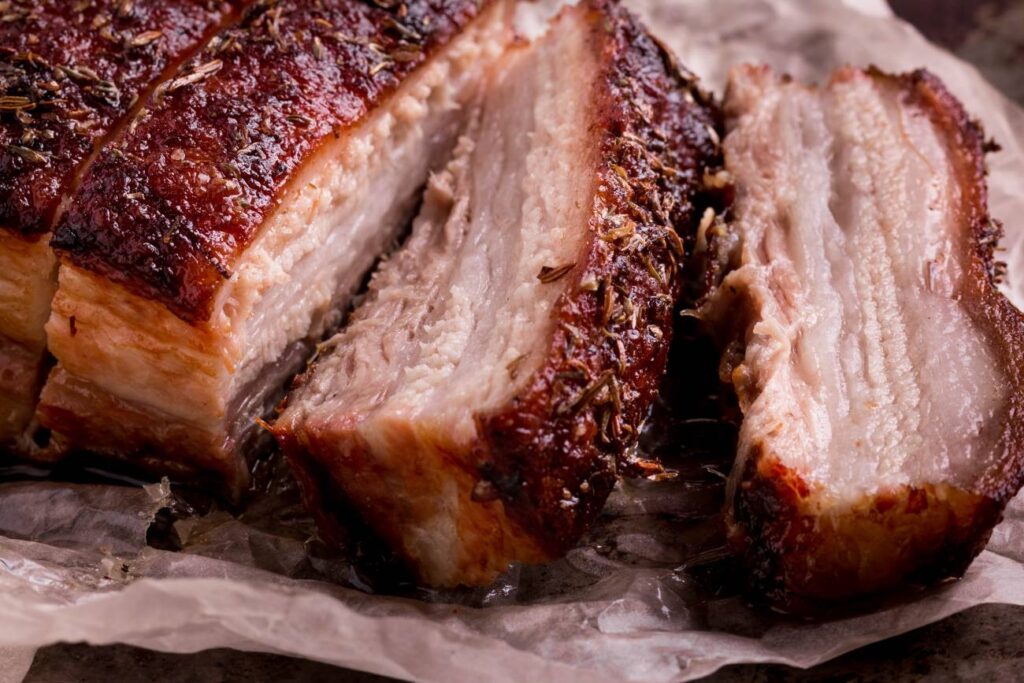
Pork is also very tasty and for people on a low-carb diet, bacon is a favorite. Bacon happens to be a processed meat and because of that, it’s not the healthiest choice of meat. However, if you’re on a low-carb diet, bacon is an acceptable option but you should ensure you only eat a moderate amount. If you’re going to include bacon in your diet, ensure you buy it locally. Take the bacon that does not contain artificial additives or ingredients. When you’re cooking bacon, be careful not to burn it.
Carbs in bacon: zero, however, make sure you carefully read the label and avoid bacon that’s cured in sugar.
5. Jerky
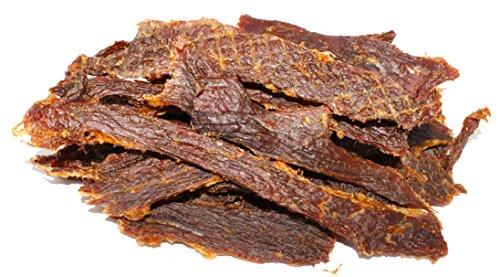
Jerky refers to meat that’s been cut into a number of strips and then dried. It can make for a perfect snack for those people who are on a weight-loss journey, just as long as it does not contain any artificial ingredients or added sugars. Keep in mind though that in most stores, a lot of the available jerky is highly processed and because of that’ it’s become unhealthy. It’s better to just make your very own jerky.
Amount of carbs in jerky: This is highly dependent on the type of jerky you choose. If you go purely for meat and seasoning,
Other low-carb meats you could go for include: veal, venision, turkey, and bison.
Seafood
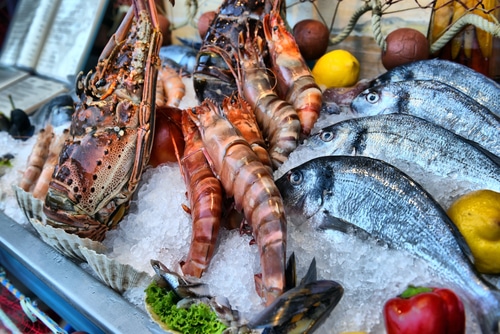
Fish and different types of seafood are very nutritious and incredibly healthy. They contain high levels of vitamin B12 and iodine and are also rich in omega-3 fatty acids. These are all nutrients that one can’t get enough of. Just like the other types of meat available for consumption, both fish and seafood do not have any carbs. Amount of carbs in seafood: Zero
6. Salmon
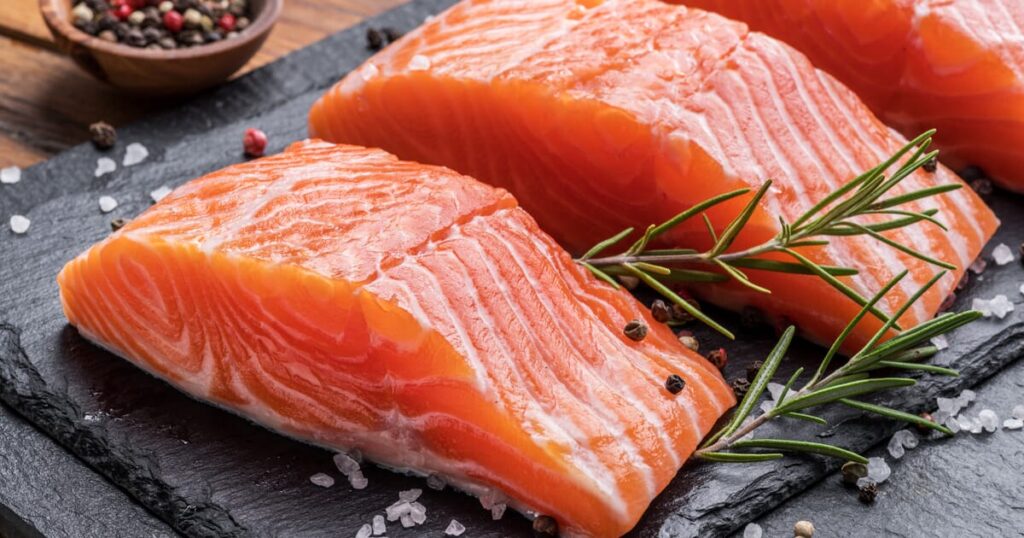
Salmon, for example is one of the most popular and preferred  types of fish among individuals who are keen on watching their health.
Salmon is a fatty fish meaning it has so much of the fats required to keep your heart healthy.  Salmon contains vitamin B12 and vitamin D3. It also contains iodine, all of which are needed in the body.
Amount of carbs in seafood and fish: Zero
7. Sardines
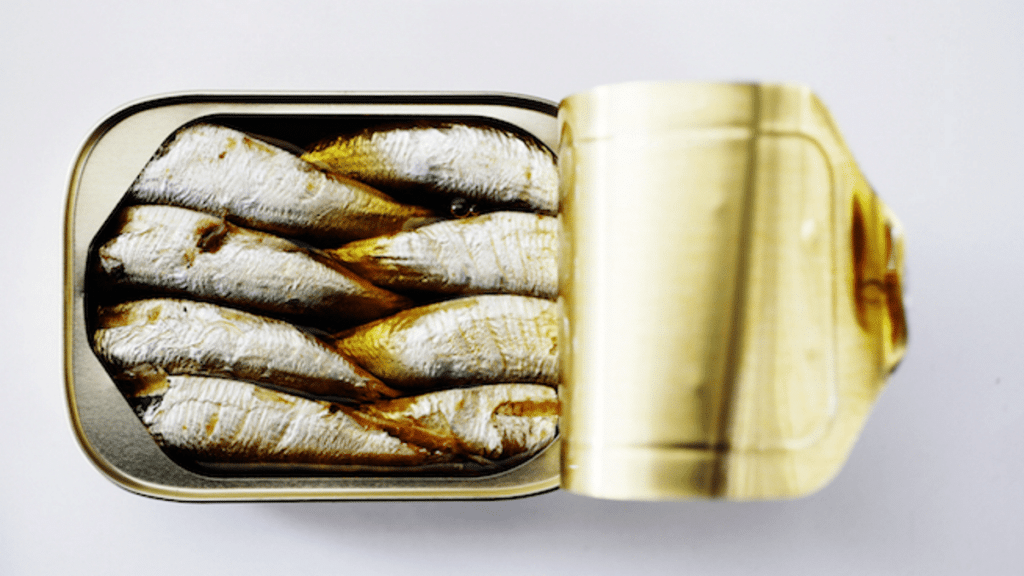
Sardines are examples of some very oily fish that instead of being cut, are eaten whole. With sardines, you eat everything including their bones. This type of fish contains a lot of nutrients. In fact, they contain every single nutrient your body needs.
Amount of carbs in sardines: Zero
8. Trout
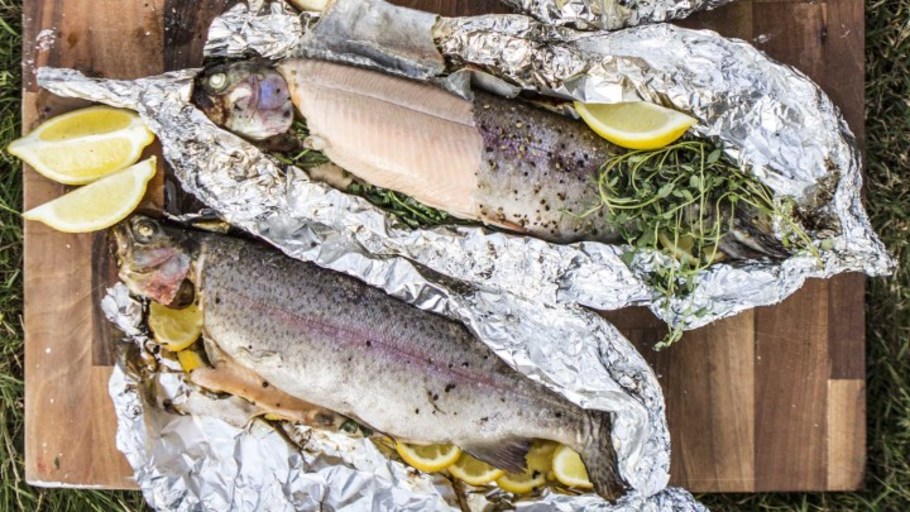
Just like salmon, trout is an example of fatty fish that’s packed with omega 3 fatty acids and many other nutrients that are important for the body’s well-being.
Amount of carbs in trout: Zero
9. Shellfish
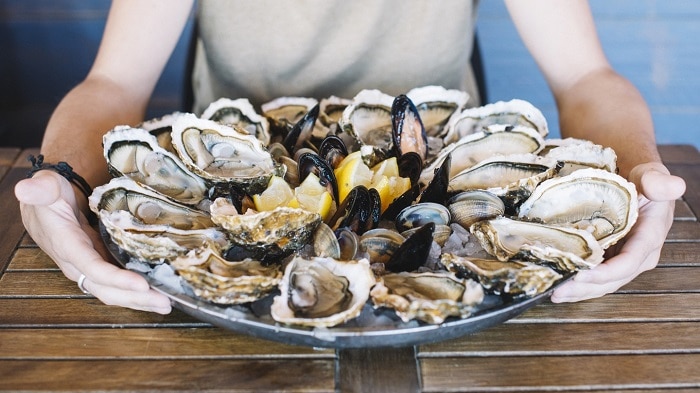
Shellfish are one of the best foods you can eat because they’re among the most nutritious in the world. Sadly, a lot of people do not eat them. Shellfish in fact, fall under the same category as organ meats if we’re talking their nutrient density. They are also a low-carb food.
Amount of carbs in shellfish: Four to Five grams per every 100 grams of shellfish
Other typesof low-carb fish and seafood include: haddock, shrimp, herring, tuna, lobster, cod, catfish, halibut
Vegetables
A lot of vegetables are low in carbs. Cruciferous vegetables and leafy green ones have even lower levels and most of their carbs have fiber. The starchy root vegetables for example sweet potatoes and potatoes are rich in carbs.
10. Broccoli
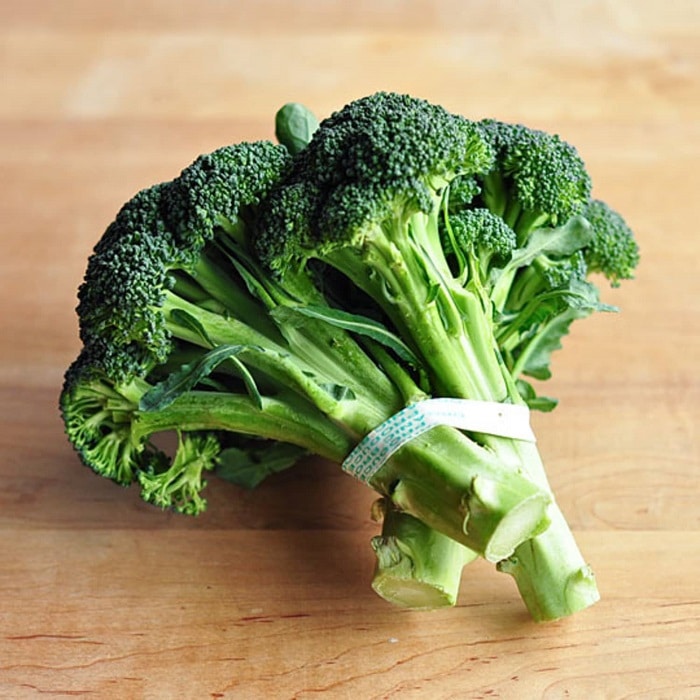
Broccoli is a cruciferous vegetable that's very tasty and can be eaten either raw or cooked. Broccoli is rich in vitamins C and K and also contains fiber. Eating broccoli is also very helpful as it contains potent plant compounds that help in fighting cancer.
Amount of carbs in broccoli: six grams for every cup or seven grams for every 100 grams.
11. Onions
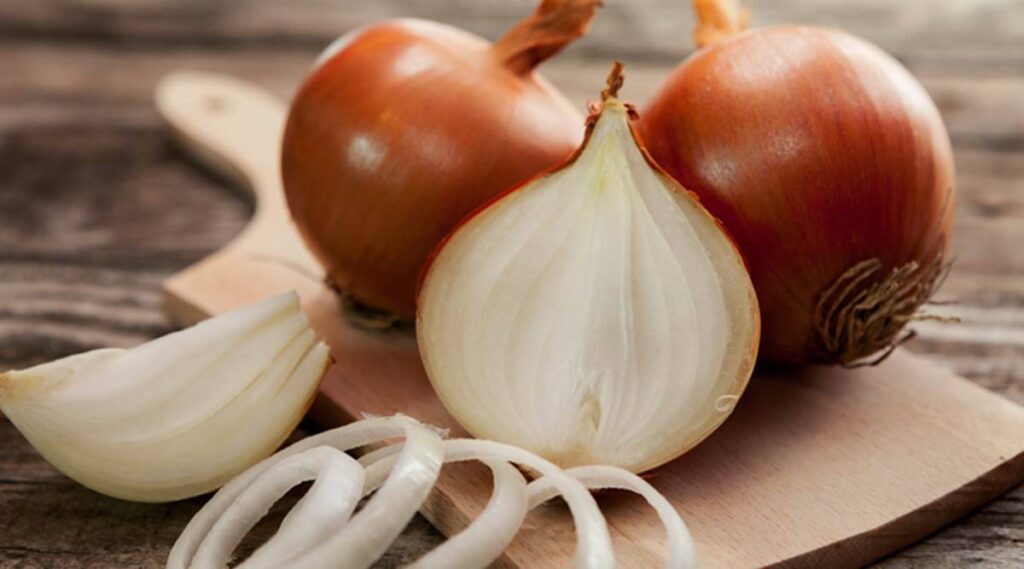
Onions are very tasty and are known to add a powerful flavor to any of your recipes. They’re rich in fiber, different anti-inflammatory properties and antioxidants.
Amount of carbs in onions: Eleven grams for every cup or nine grams for every 100 grams.
12. Tomatoes
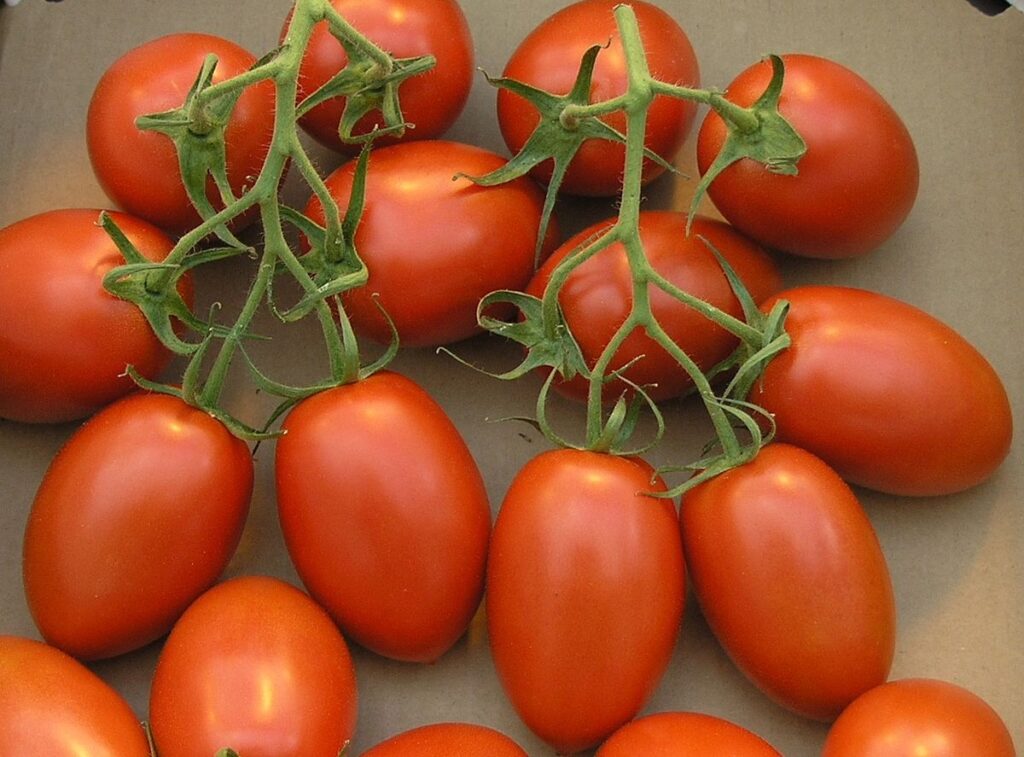
Tomatoes are berries or fruits that are usually eaten as vegetables. They’re rich in vitamin C and potassium.
Amount of carbs in tomatoes: Seven grams in one large-size tomato or four grams for every 100 grams.
13. Brussels sprout
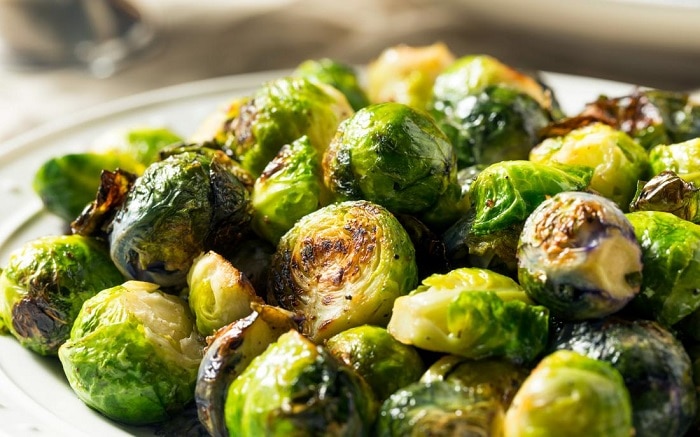
Brussels sprouts are very nutritious vegetables that are closely related to kale and broccoli. They’re rich in vitamin C and vitamin K and have a lot of plant compounds.
Amount of carbs in Brussels sprout- Six grams for every half cup or seven grams for every 100 grams.
14. Cauliflower
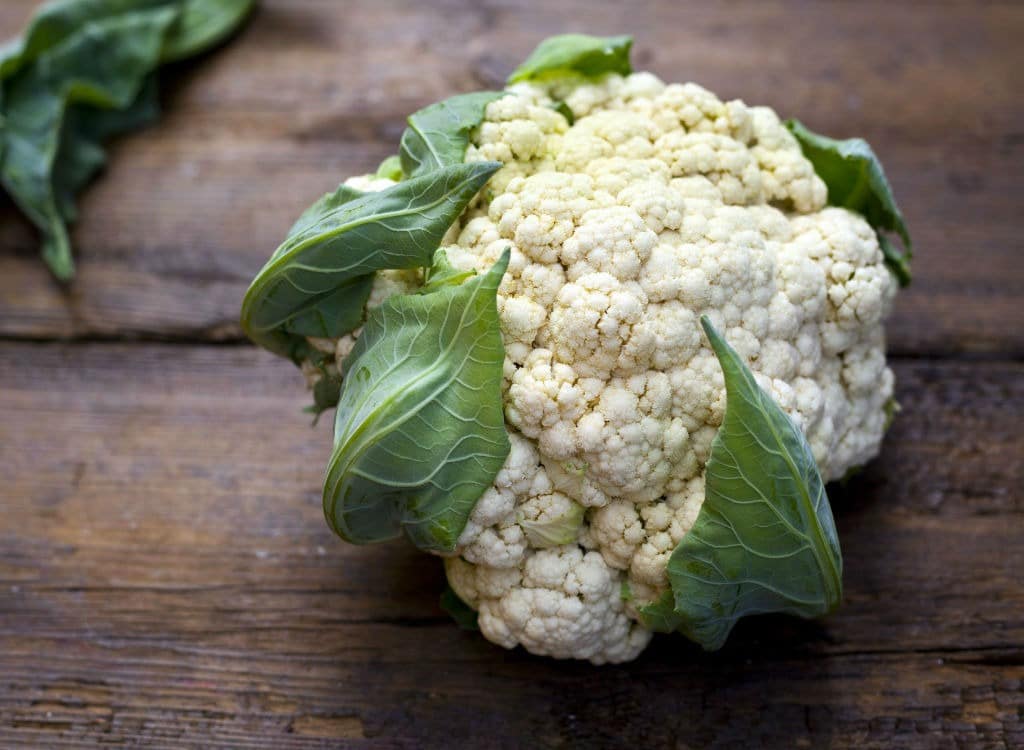
Cauliflower is a very tasty and also very versatile vegetable that can be used in making very interesting dishes around your kitchen. Cauliflower is rich in vitamins and K and also folate.
Amount of carbs in cauliflower: Five grams for every cup and five grams for every 100 grams.
15. Kale
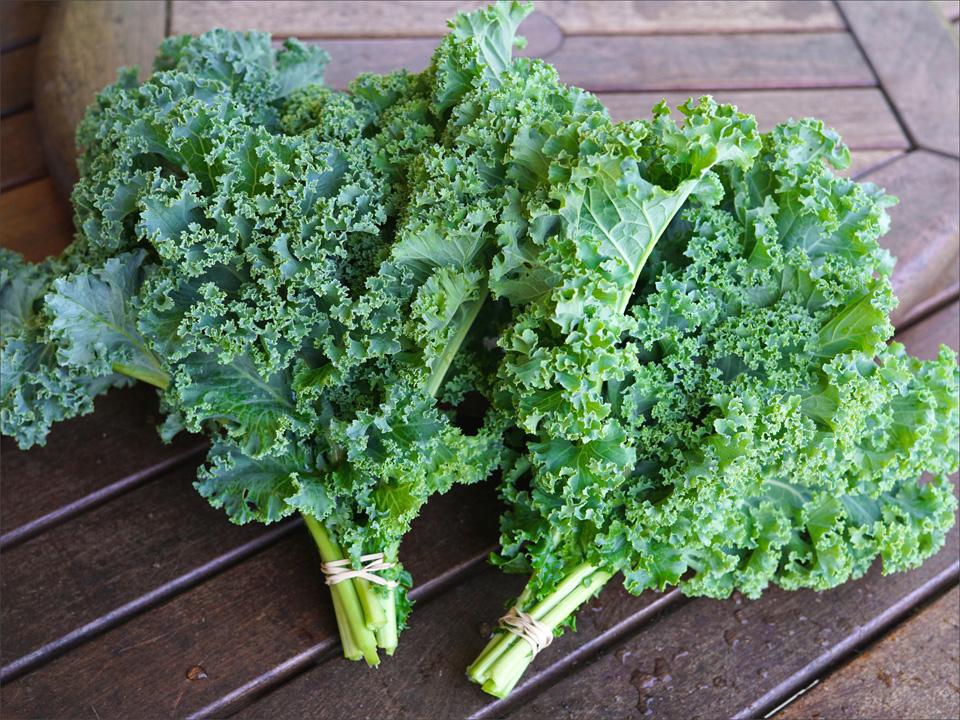
Kale is a very popular vegetable especially among people who are particularly keen on watching their health. It provides many health benefits and is packed with vitamin C, vitamin K and fiber. Kales also contain carotene antioxidants.
Amount of carbs in kales: Seven grams in every cup or ten grams for every 100 grams.
16. Eggplant
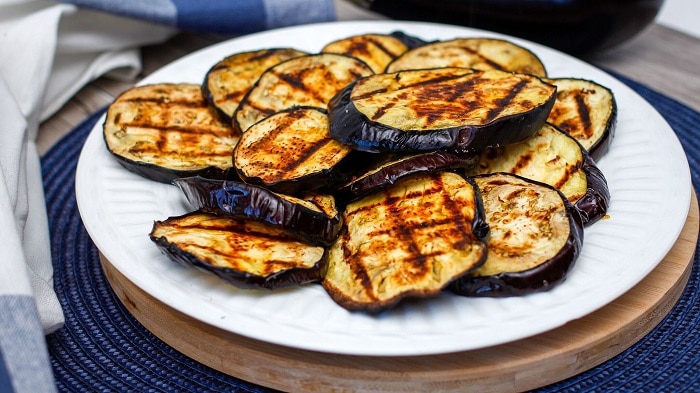
Eggplant is one of the most commonly eaten fruit although most people use it as a vegetable. Eggplant has a lot of uses and contains a lot of fiber.
Amount of carbs in eggplant: Five grams for every cup or six grams for every 100 grams.
17. Cucumber
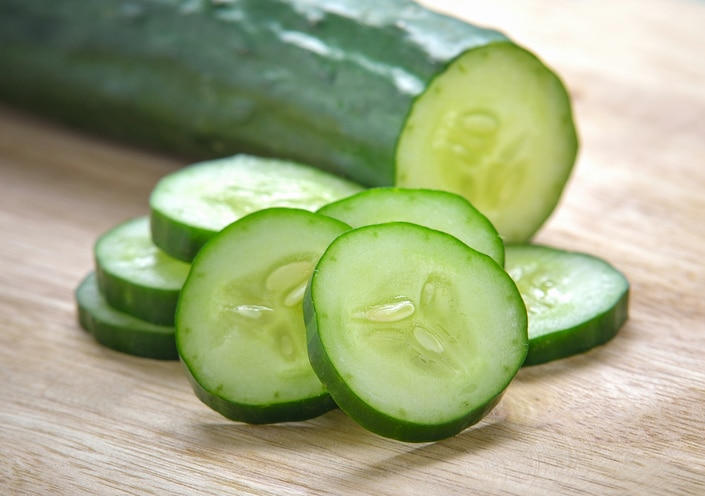
Cucumber is another very popular vegetable. It has a mild flavor and mostly consists of water. Cucumber also contains small amounts of vitamin K.
Amount of carbs in cucumber: Two grams for every half cup or four grams for every 100 grams.
17. Bell peppers
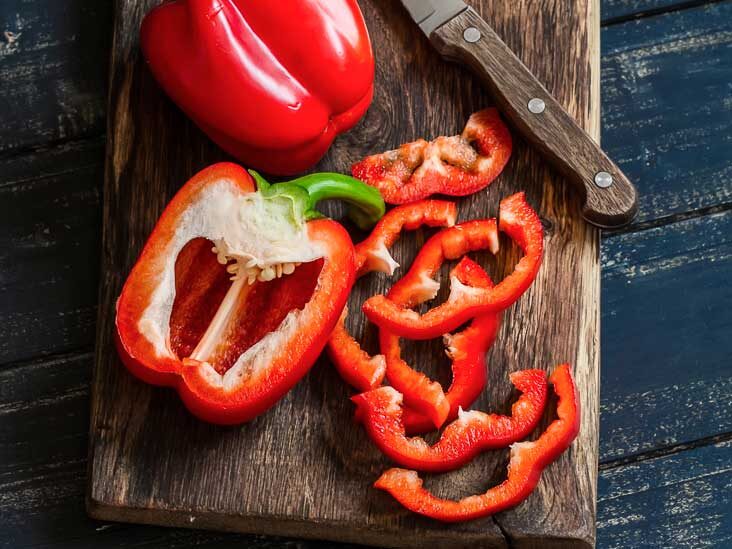
Bell peppers are a common fruit in kitchens. Aside from their distinct taste and satisfying flavor, they also have many health benefits. Bell peppers are rich in fiber , carotene antioxidants and in vitamin C.
Amount of carbs in bell peppers:  Nine  grams for every cup, or six grams for every 100 grams
19. Asparagus
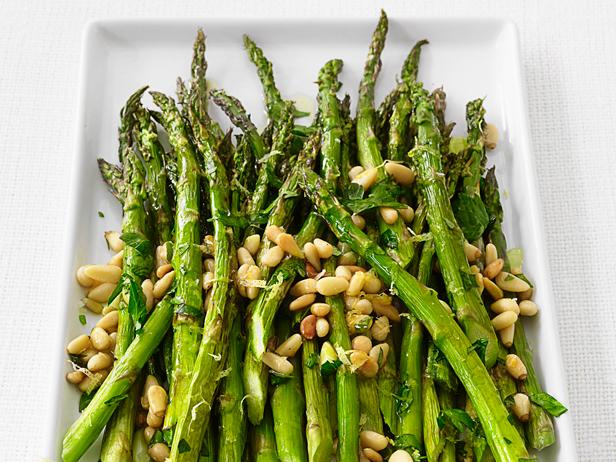
Asparagus, aside from being a highly delicious spring vegetable, is rich in vitamin C, fiber , vitamin K, folate and carotene antioxidants. Eating asparagus also means you’re eating a vegetable with one of the highest levels of protein compared to most of them.
Amount of carbs in asparagus: Three grams for every cup or two grams for every 100 grams
22. Green beans
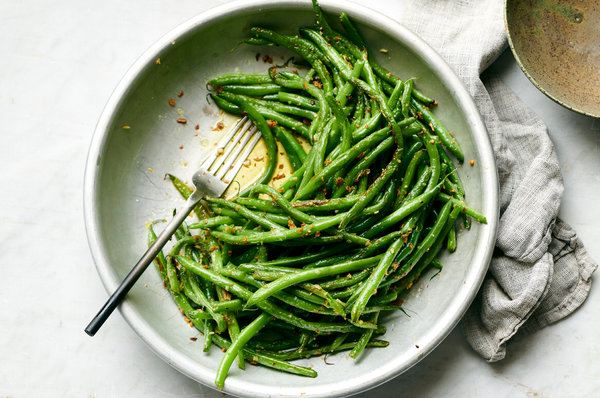
Although green beans are eaten in the same way as vegetables, they are actually legumes. They contain high levels of nutrients that include protein, vitamin C, fiber, vitamin K, potassium and magnesium.
Amount of carbs in green beans: Eight grams for every cup, Seven grams for every 100 grams
23. Mushrooms
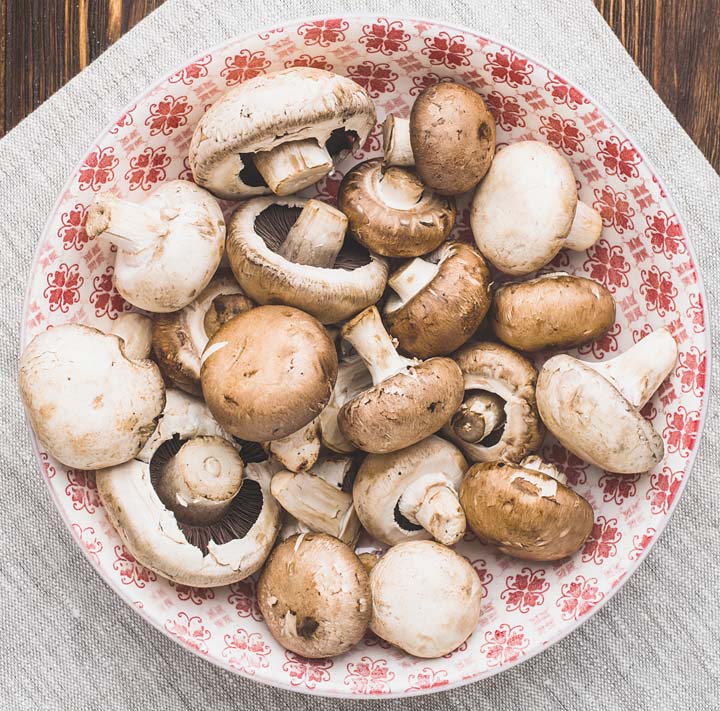
Technically, mushrooms are not plants. However, edible mushrooms are placed under the vegetables category. These mushrooms contain magnesium in decent amounts and are rich in some of the B vitamins.
The amount of carbs in mushrooms: Three grams for every cup, and three graps for every 100 grams( for white mushrooms)
Other low-carb vegetables include: Celery, spinach, Swiss chard, cabbage, and zucchini. Actually, almost all vegetables are low-carb foods with an exception of the starchy root type. This explains why it’s easy to eat plenty of vegetables without surpassing your carb limit.
Fruits
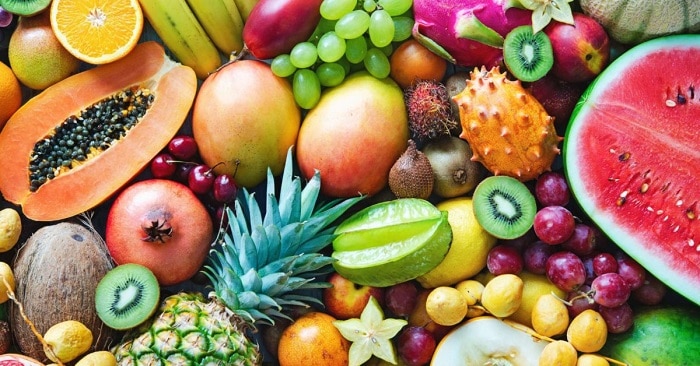
While there’s a general perception of fruits being healthy, they are actually controversial when it comes to people following a strict diet low in carbs. This is because compared to vegetables a lot of fruits available contain a high level of carbs. Depending on the number of carbs you’re aiming to get in your body, you might have to consider restricting your intake of fruits to just about a piece or two a day. This, however, doesn’t apply to fruits such as olives or avocadoes. You also have the option of going for low-sugar berries that include strawberries instead.
22. Avocado
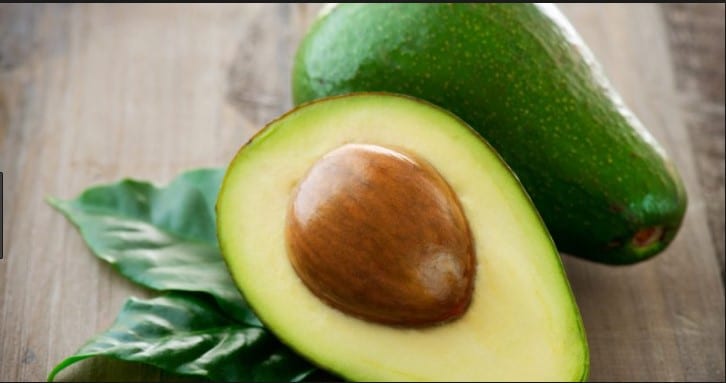
Avocado is a unique fruit that instead of being loaded with carbs is rich in healthy fats that your body could definitely use. Avocadoes are extremely high in both potassium and fiber and contain other nutrients in decent amounts. About seventy-eight percent of the amount of carbs found in avocado are fiber. That means avocados contain nearly zero digestible net carbs.
Amount of carbs in avocado: thirteen  grams for every cup, or eight and a half grams for every 100 grams
23. Olives
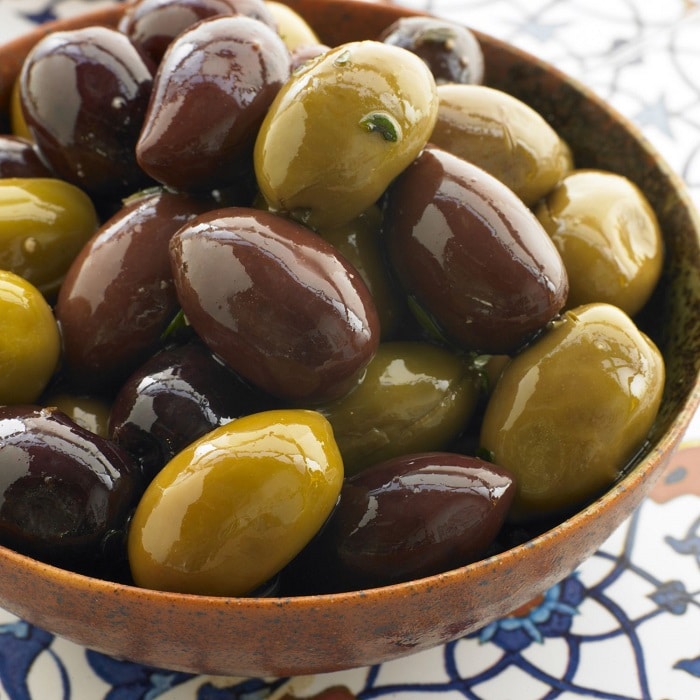
Olives are not only delicious fruits, but are also high in fat, copper and iron. They contain vitamin E in decent amounts.
Amount of carbs in olives: Two grams for every ounce, or six grams for every 100 grams.
24. Strawberries
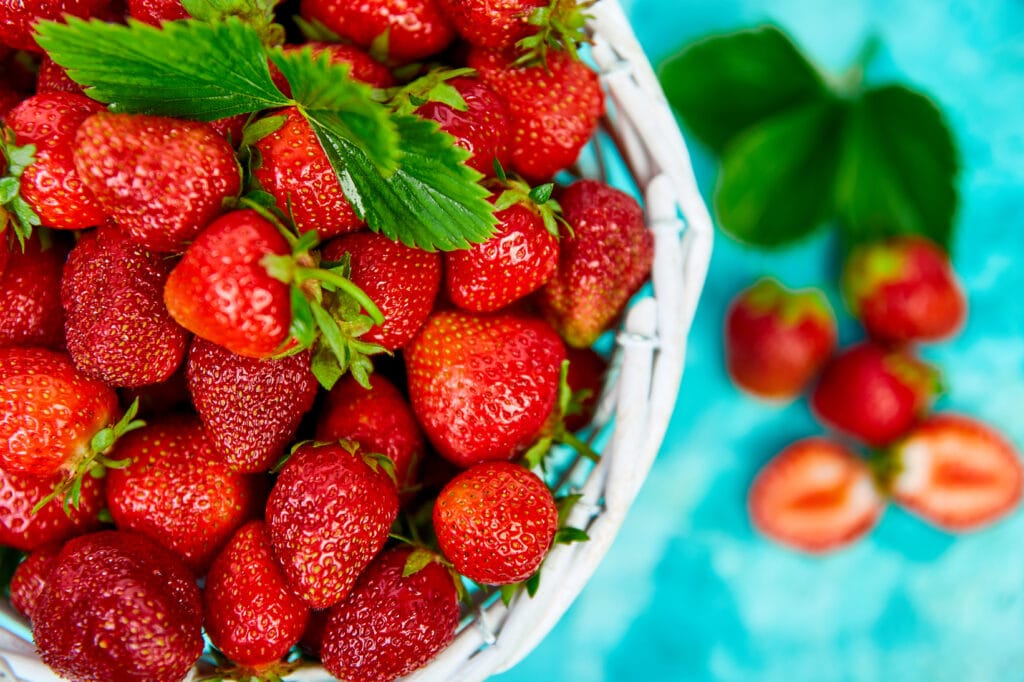
Among the many fruits you can find around, strawberries contain the least amount of carbs but are full of nutrients. They are packed with manganese, vitamin C and many different antioxidants.
Amount of carbs in strawberries: Eleven grams for every cup, or eight grams for every 100 grams
25. Grapefruit

Being a member of the citrus family, grapefruits are somehow related to oranges. They are rich in both vitamin C and carotene antioxidants.
Amount of carbs in grapefruit: Thirteen grams for every half grapefruit, or eleven grams for every 100 grams
26. Apricots
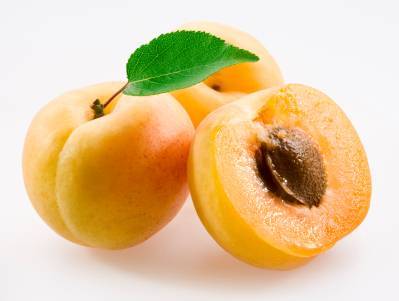
Apricots aside from being so delicious, are very healthy with each one of them containing vitamin C, carbohydrates and potassium.
Amount of carbs in apricots: Eight grams for every two apricots, or eleven grams for every 100 grams.
Other low-carb fruits include: lemons, kiwis, raspberries, mulberries, and oranges
Nuts and seeds
When it comes to low-carb diets, nuts and seeds are quite popular. They may be low in carbs but are really high in fiber, protein and a number of different micronutrients. Many people like to eat nuts as snacks while seeds are preferred when one is seeking to add some crunch to a salad or a recipe. To add to the many benefits, flours made from nuts and seeds for example almond or coconut flour and flaxseed meal can be used in making low -carb bread and many different baked products.
27. Almonds
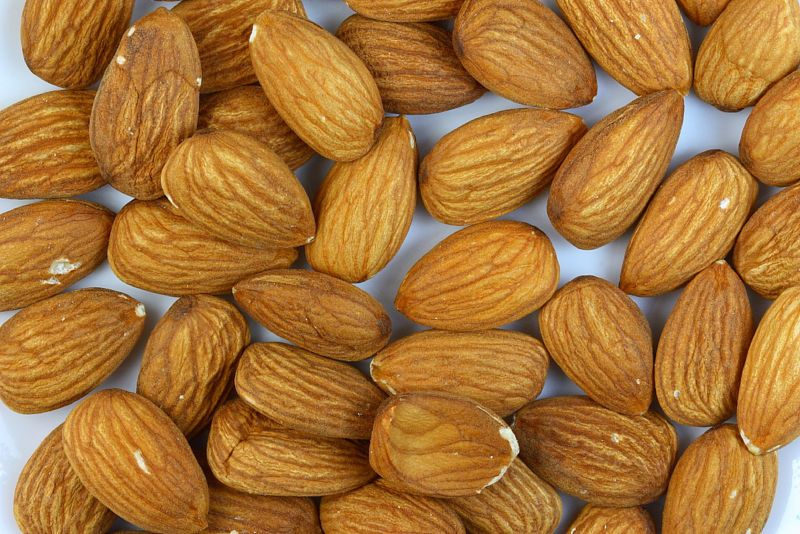
Almonds are known to be both tasty and crunchy but aside from that, they’re loaded with vitamin E and fiber. Almonds are also among the best sources of magnesium which is a mineral your body cannot get enough of. Even better, eating almonds makes you feel fuller for longer which is great for people on a weight loss journey.
Amount of carbs in almonds: Six grams for every ounce, or twenty-two grams for every 100 grams
28. Walnuts
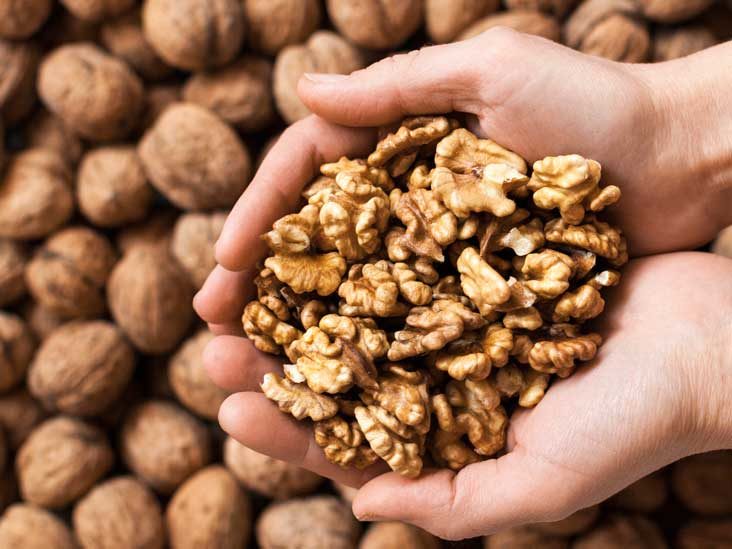
Walnuts are also delicious and are packed with various nutrients. They are particularly rich in alpha-linolenic acid (ALA) which is an omega-3 type of fatty acid.
Amount of carbs in walnuts: Four grams for every ounce, or fourteen grams for every 100 grams
29. Peanuts
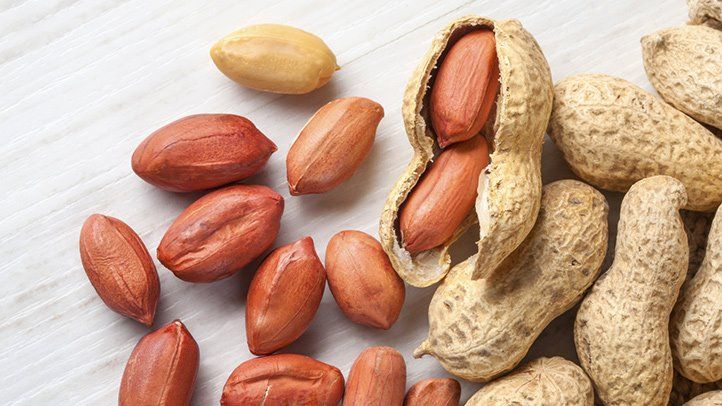
While peanuts are legumes, they are mostly eaten as nuts. They are rich in fiber and contain vitamin E, magnesium, minerals and other vitamins.
Amount of carbs in peanuts: Five grams for every ounce, or sixteen grams for every 100 grams
30. Chia seeds
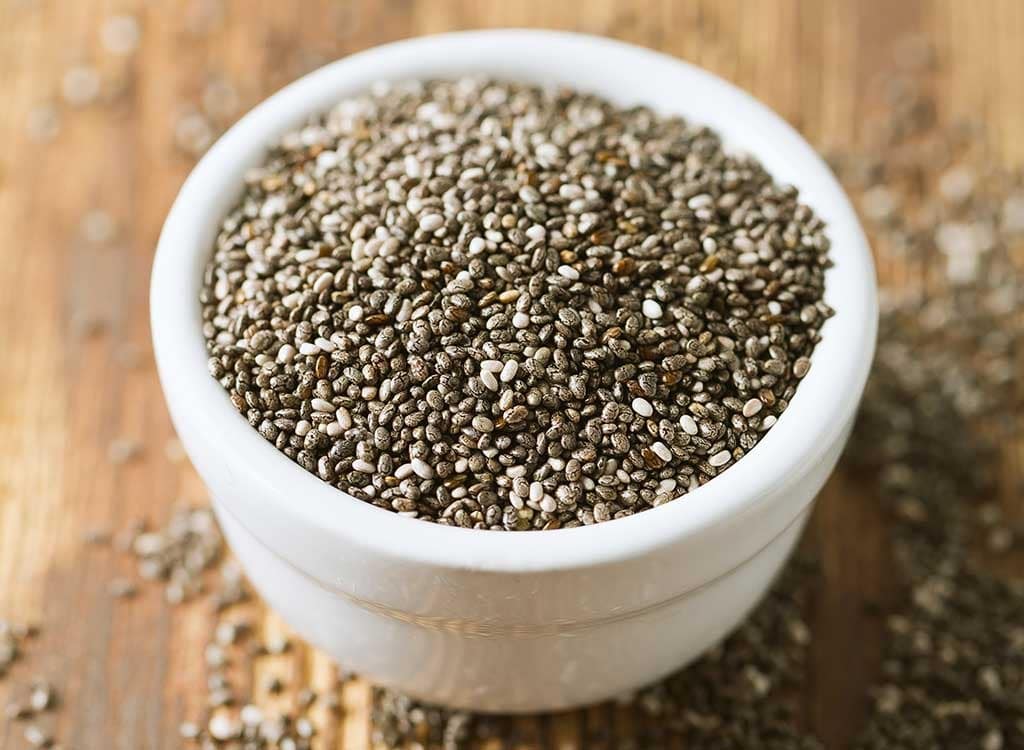
Chia seeds are among the most popular foods in the world. They’re packed with important nutrients and are great for use in a number of recipes that are particularly low-carb. Chia seeds are a rich source of dietary fiber . While they do contain a low amount of carbs, consider that 86% of these carbs are actually fiber so they contain very few carbs that are actually digestible.
Amount of carbs in chia seeds: Twelve grams for every ounce, or forty four grams for every 100 grams
Other low-carb nuts and seeds include: Hazelnuts, cashewnuts, macadamia nuts, flaxseeds, pumpkin seeds, pistachios, sunflower seeds and coconuts
Dairy
If you have no problems eating or drinking dairy products, then you’ll be glad to know that they are great low-carb foods. That said, when you’re taking any dairy products, always ensure you do it after carefully reading the labels. Stay away from anything that comes with added sugar.
31. Cheese
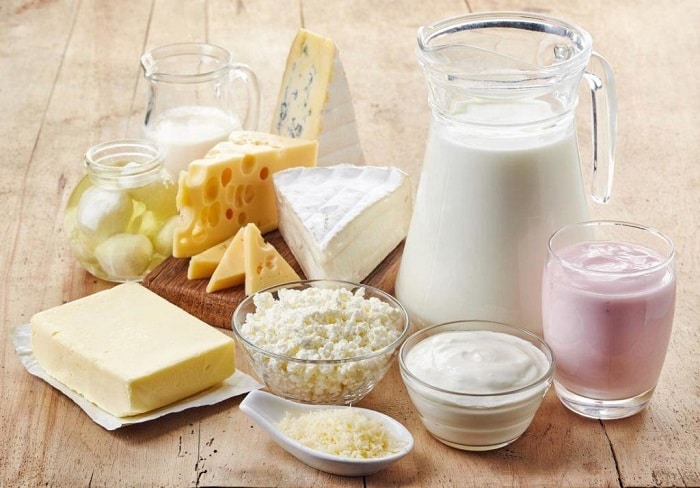
Cheese is among the tastiest foods low in carbs that gives you the option of eating it either as an ingredient in a great recipe or eating it raw. Cheese is delicious when paired with foods such as meat or just a burger. It’s full of nutrition and just a thick slice contains an equal amount of nutrients found in a whole glass of milk.
Amount of carbs in cheese: 0.4 grams for every slice, or 1.3 grams for every 100 grams (for cheddar cheese)
32. Heavy cream
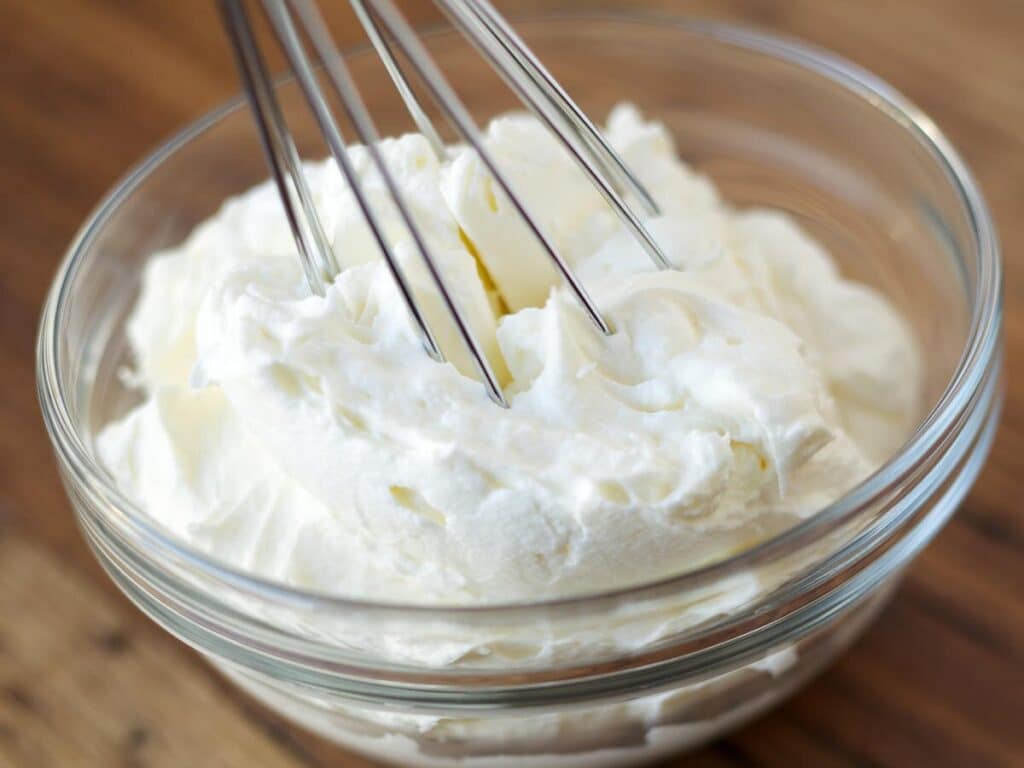
Heavy cream is has a very minimal amount of carbs and also contains a minimal amount of protein. However, heavy cream is rich in fat. Often, people who are on strict low-carb diets prefer to put heavy cream in their coffee or to make it part of their recipes. A great example of how it can be eaten is by taking a bowl full of berries and adding some cream (whipped) to make a tasty dessert.
Amount of carbs in heavy cream: One gram for every ounce, or three grams for every 100 grams.
33. Full fat yogurt
Eating full-fat yogurt plays an exceptionally great role in your health as it contains a lot of the similar nutrients found in whole milk. Yogurt also contains probiotic bacteria that’s great for your health.
Amount of carbs in full-fat yogurt : Eleven grams for every eight ounces, or five grams for every 100 grams
34. Greek yogurt
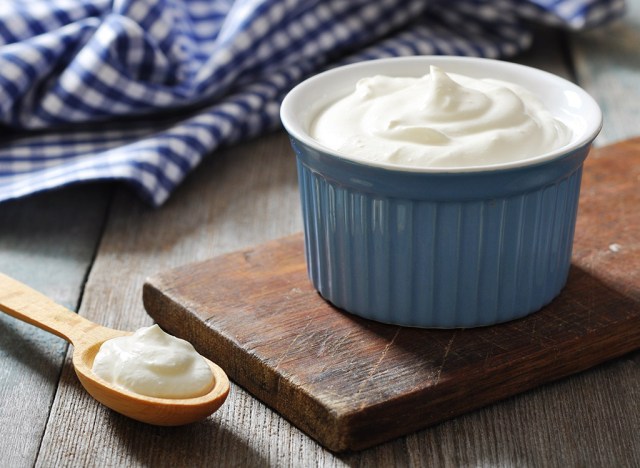
Greek yogurt is also known as strained yogurt. It’s very thick when looked at against regular yogurt. It’s packed with nutrients needed by your body especially protein.
Amount of carbs in greek yogurt: Six grams for every six ounces, or four grams for every 100 grams
Fats and oils
In many low-carb diets that are real food based, healthy fats and oils are allowed. However, you need to avoid using refined vegetable oils such as corn oil or soybean since these when consumed in excess are unhealthy.
35. Butter
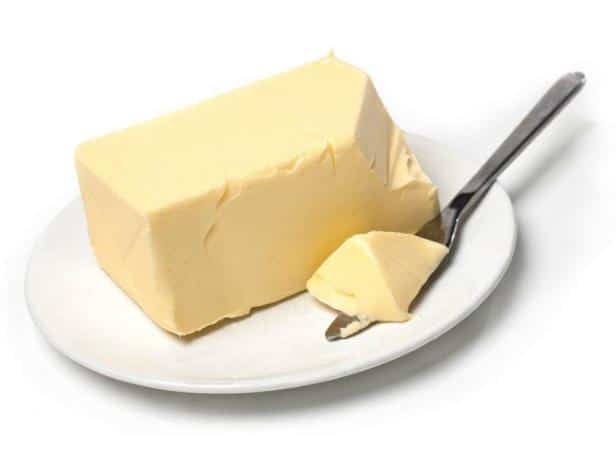
Butter was for a long time seen as bad for one’s body due to the high amount of saturated fats in it. However, this has changed overtime and butter is making a comeback in people’s diets. You should go for grass-fed butter because it’s richer in nutrients.
Amount of carbs in butter: Zero
36. Extra virgin olive oil
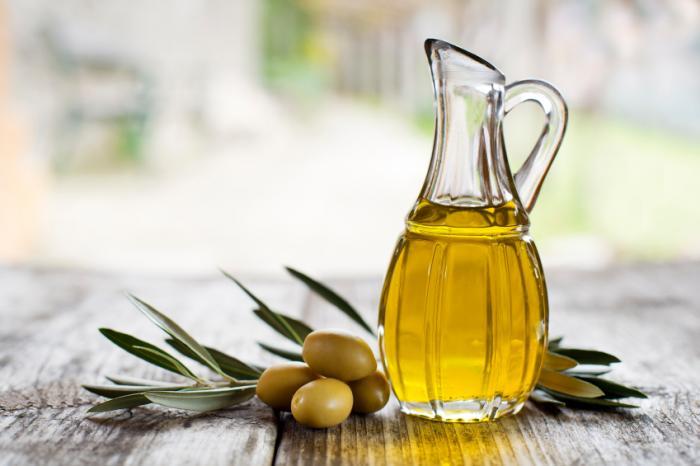
If you’ve been looking for the healthiest fat that exists then extra virgin olive oil is it. It’s a must-have in the heart-healthy Mediterranean diet which is usually packed with powerful anti-inflammatory compounds and antioxidants.
Amount of carbs in extra virgin olive oil: zero
37. Coconut oil
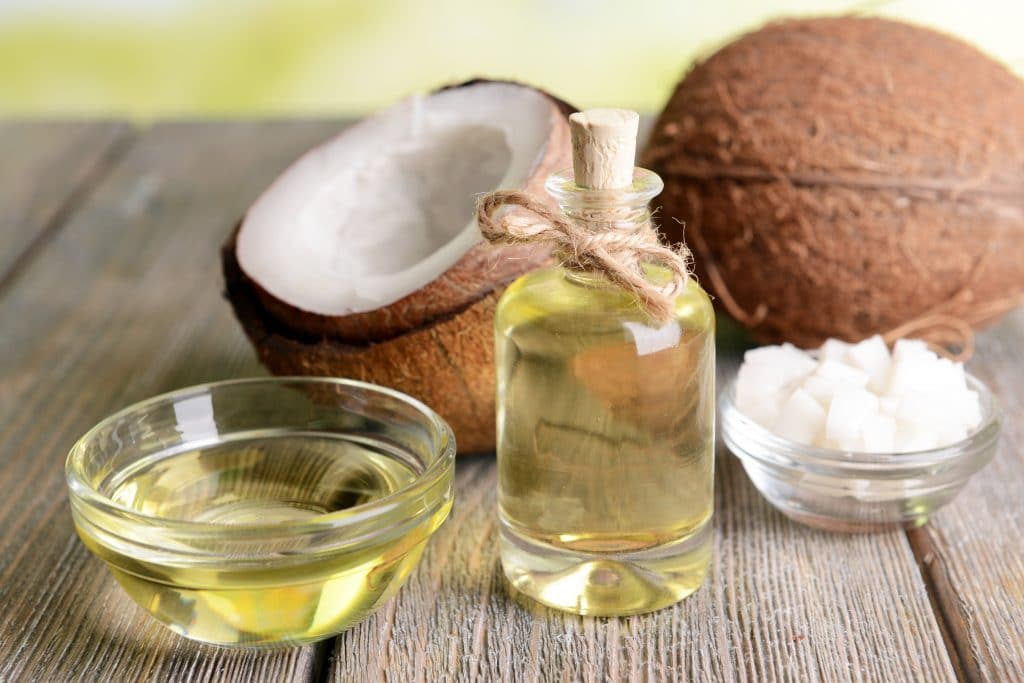
Coconut oil is also another healthy fat. It’s rich in medium chain fatty acids which have a great effect on your metabolism. The fats are known to cause a reduction in your appetite and eating them boosts your ability to burn fat. These fats help you lose belly fat.
Amount of carbs in coconut oil: Zero
Other fats that are low in carbs include: lard, avocado oil, and tallow.
Beverages

Most beverages that are sugar-free fit in the low-carb diet category. However, don't forget that fruit juices contain sugar and carbs in high levels so you should avoid them.
38. Water
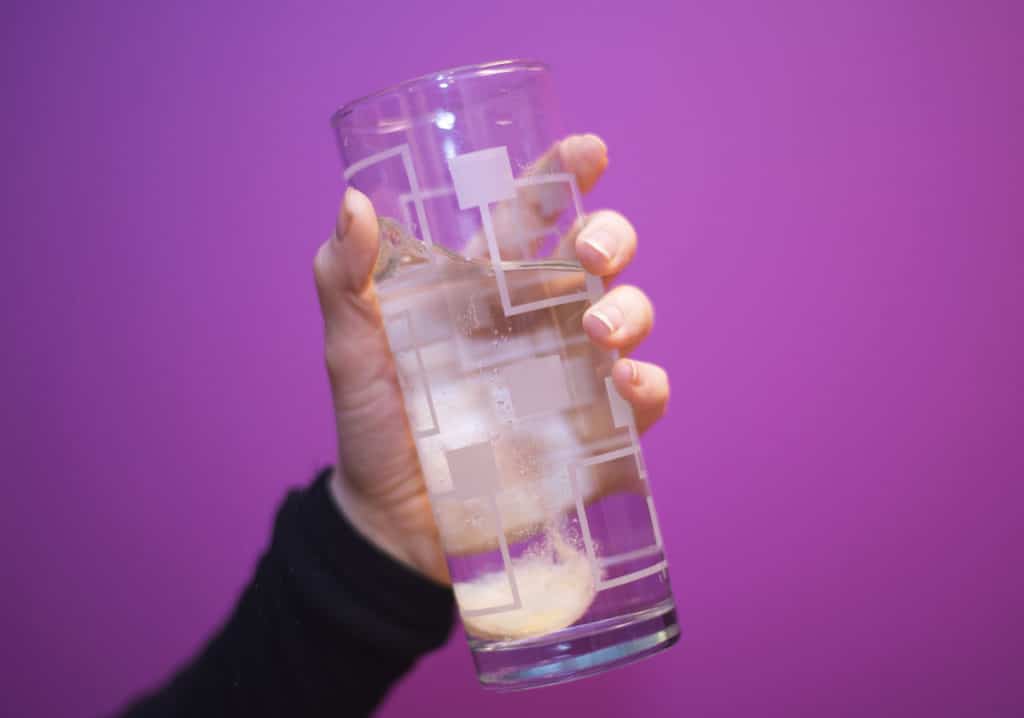
We are often advised to drink lots of water because it's healthy and as such water should be your go-to beverage regardless of any other meals you take throughout the day.
Amount of carbs in water: Zero
39. Coffee
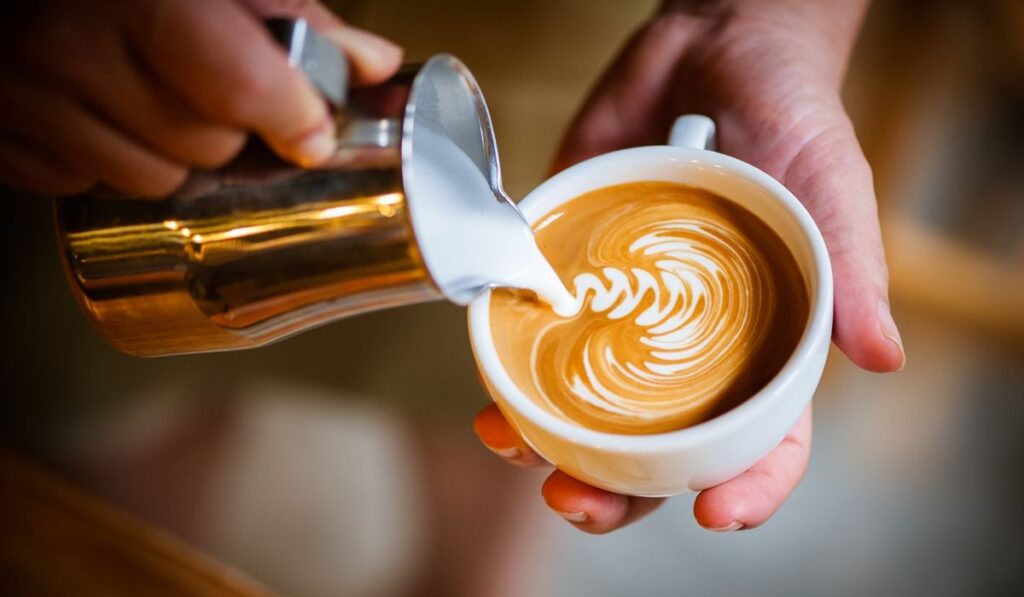
In the past, coffee was often demonized and people claimed that it was bad for you. However, it’s a healthy beverage and happens to be one of the most important and rich sources of dietary antioxidants. According to studies, coffee drinkers tend to live longer than those who don’t drink the beverage. It lowers the risk of many different kinds of diseases that include diabetes type 2, Alzheimers and Parkinson’s disease. Just something to remember though, when you’re drinking your coffee, stay away from any unhealthy additions. Black coffee is the best but it’s alright to add some full-fat milk or some heavy cream.
Amount of carbs in coffee: Zero
40. Tea
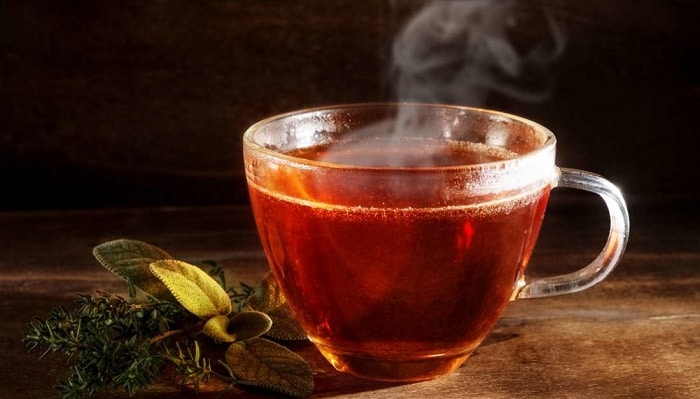
Tea has been a topic of study for quite some time, especially the green tea variation. It's shown to have a number of health benefits that are very impressive and goes a long way in helping you burn the fat in your body.
Amount of carbs in tea: Zero
41. Club soda/ Carbonated Water
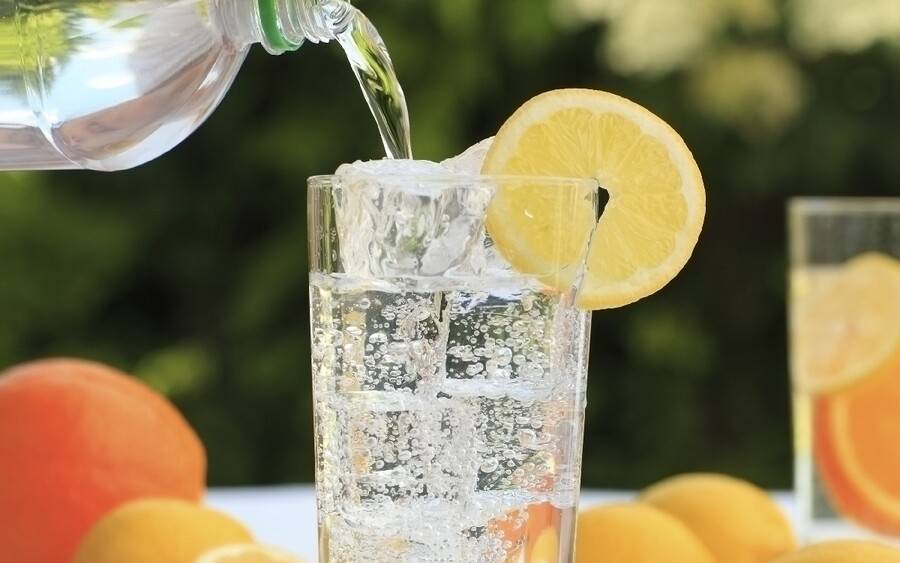
Club soda refers to water that contains carbon dioxide. This is acceptable just as long as it remains sugar free. You should always check the label first before you drink just to be sure.
Amount of carbs in club soda: Zero
Other foods
Here are other foods that do not necessarily fit in the above categories
42. Dark chocolate
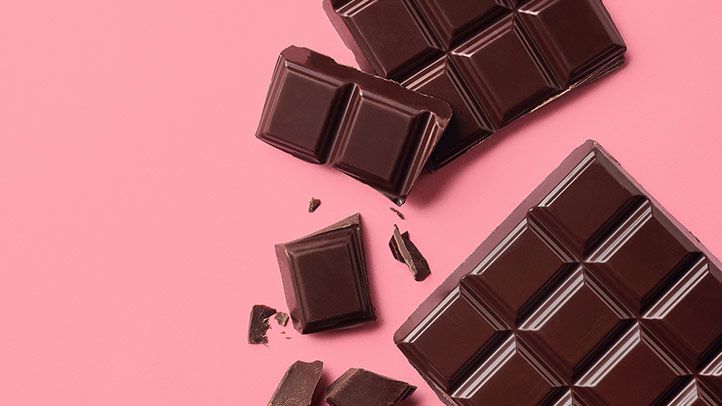
The fact that dark chocolate is considered healthy may come as a surprise to many but believe it or not, when you eat high quality dark chocolate, you get a nice low-carb treat. Ensure you choose real dark chocolate that has cocoa content of at least 70 to 80% with very minimum sugar. Some of the many benefits that come with drinking dark chocolate include improved levels of blood pressure, and improved brain function. It also reduces your risk of heart attack or any other heart diseases. Keep in mind that 25% of the amount of carbs you find in dark chocolate is actually fiber that helps in lowering the total amount of digestible net carb content.
Amount of carbs in dark chocolate: Thirteen grams for every one-ounce chocolate piece, or forty six grams for every 100 grams. This is dependent on the chocolate type so ensure you read the label properly.
43. Herbs, Spices and Condiments
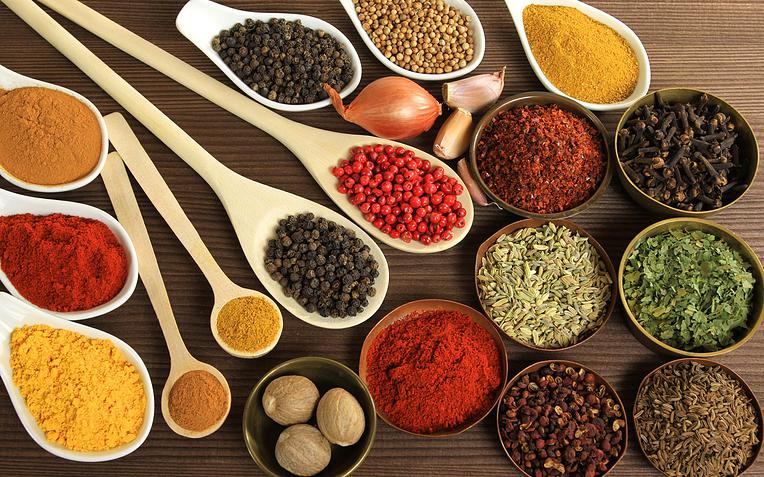
You can find an endless variety of herbs, spices and other condiments that are delicious to taste. They are mostly low in carbs but are packed with a powerful nutritional punch that will keep your meals flavored. Some examples of such herbs include pepper, salt, garlic, cinnamon, ginger, mustard, and oregano.
+ The Bottom Line
It’s highly advisable that you eat carbs at low levels as it will have a lot of health benefits. It doesn’t have to be complicated. Most of the foods with a low-carb label are healthy, full of nutrition and most of all, very delicious. To add on to that, these foods are highly diverse and cover a lot of food categories that include vegetables, meats, fish, fruits, dairy products, just to mention a few. Getting into a low carb diet that mostly contains real foods will greatly help you lose weight and after a while, you will see a significant improvement in your overall health.

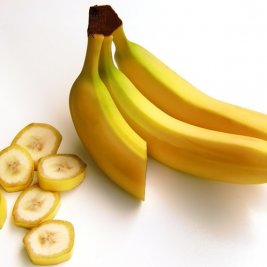
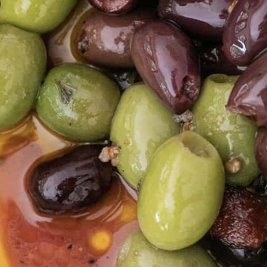
Comments